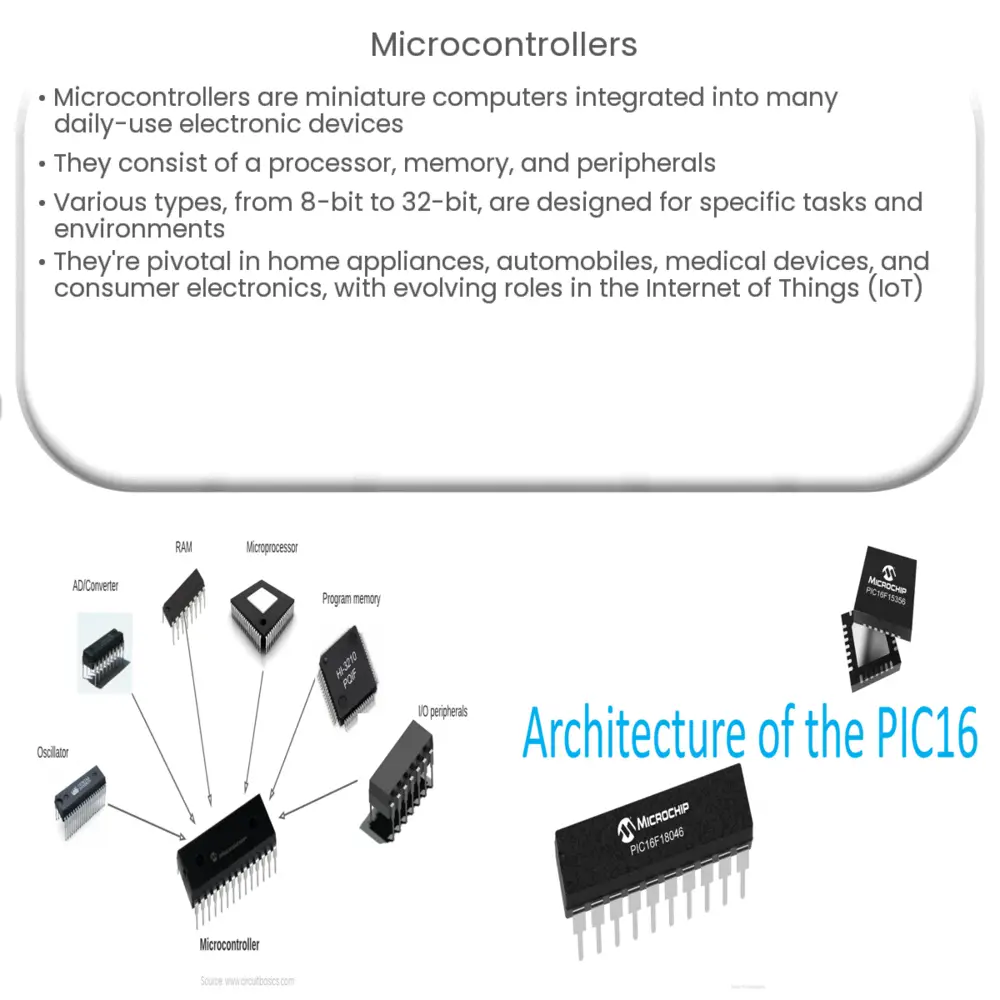Explore the world of microcontrollers, their key components, types, programming, applications, and future trends in this comprehensive guide.

Understanding Microcontrollers
Microcontrollers, at their most basic, are miniature computers embedded into a single integrated circuit. They are the heart of many electronic devices we use every day, from microwave ovens to cars. While they may not have the processing power of a typical desktop or laptop computer, their small size, low power consumption, and ability to interact with other hardware make them perfect for countless applications.
Key Components of Microcontrollers
A microcontroller consists of several components each playing a critical role in its operation. These include a processor, memory, and peripherals.
- Processor: The processor, also known as the central processing unit (CPU), is the brain of the microcontroller. It executes instructions from the memory.
- Memory: Memory is where the microcontroller stores data and the program it’s currently running. There are two types of memory: RAM (Random Access Memory) for temporary data storage, and Flash memory for permanent storage.
- Peripherals: These are hardware components like timers, communication ports, and analog-to-digital converters that allow the microcontroller to interact with the outside world.
Types of Microcontrollers
Microcontrollers come in a variety of types, each designed to perform specific tasks or to function within particular environments. Here are some of the most common types:
- 8-bit Microcontrollers: These are simple and cost-effective microcontrollers typically used in applications that require minimal processing power, such as in home appliances.
- 16-bit Microcontrollers: These offer more processing power and memory capacity than 8-bit microcontrollers. They’re often used in devices requiring more complex operations, like industrial control systems.
- 32-bit Microcontrollers: These are high-performance microcontrollers capable of executing complex tasks. They are often found in devices like smartphones and advanced automotive systems.
Regardless of their differences, all microcontrollers share a common goal: to control the operation of a device or system. In the next part of this article, we will delve deeper into how microcontrollers are programmed, their applications in the real world, and the future trends in microcontroller technology.
Programming Microcontrollers
Microcontrollers are typically programmed using languages such as C or C++. These languages allow for direct manipulation of the hardware, which is critical for the fine control often required in microcontroller applications. Microcontroller programming involves writing code, compiling it into machine language that the microcontroller can understand, and then loading this program into the microcontroller’s memory.
Applications of Microcontrollers
Microcontrollers are ubiquitous in our day-to-day lives, being integral components of a myriad of electronic devices. Some of their applications include:
- Home Appliances: From microwave ovens to washing machines, microcontrollers make our appliances smarter and more efficient.
- Automobiles: Modern vehicles use microcontrollers for engine control, anti-lock braking systems, power steering, and more.
- Medical Devices: Microcontrollers are at the heart of many medical devices, such as pacemakers and blood glucose monitors.
- Consumer Electronics: Devices like smartphones, televisions, and gaming consoles all rely on microcontrollers for various functions.
Future Trends in Microcontroller Technology
Microcontroller technology continues to evolve, driven by demands for more processing power, lower power consumption, and greater functionality. Trends like the Internet of Things (IoT) are pushing the limits of what microcontrollers can do, with new generations of microcontrollers being designed to facilitate machine-to-machine communication, advanced sensor integration, and sophisticated power management.
Conclusion
In conclusion, microcontrollers are crucial components in the realm of electronics, acting as the brains behind countless devices. Their versatility, from simple 8-bit microcontrollers controlling home appliances to powerful 32-bit microcontrollers driving advanced systems, highlights their importance. As technology advances, the role of microcontrollers is set to grow even more prominent, driving innovation and enabling a new generation of smart, connected devices. Understanding the basics of microcontrollers is the first step to appreciating the complex technological world that surrounds us.

